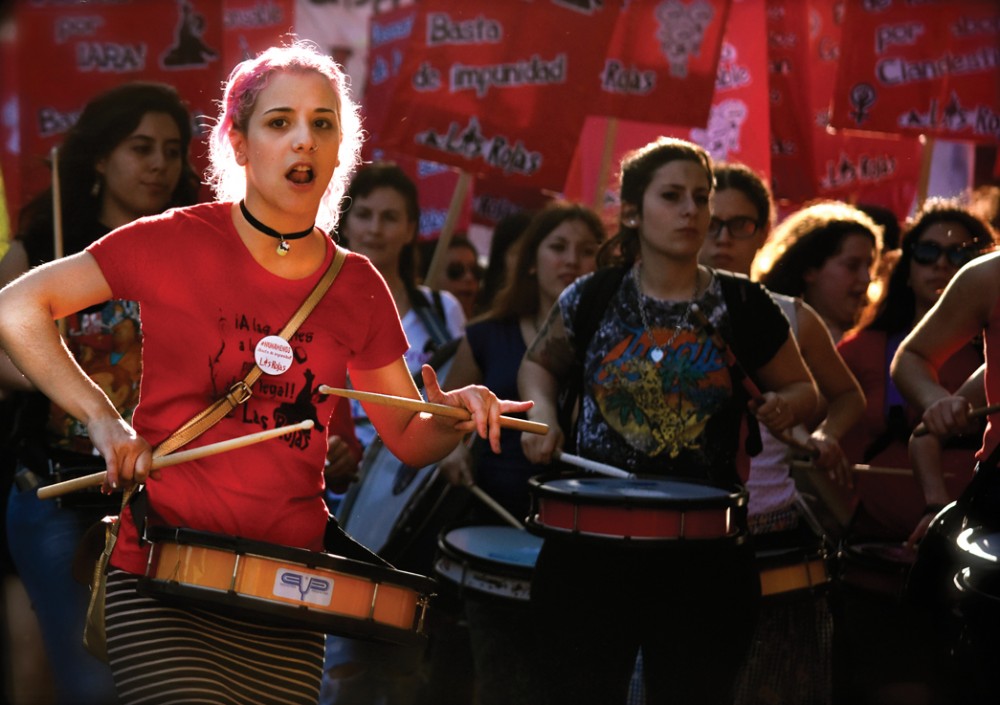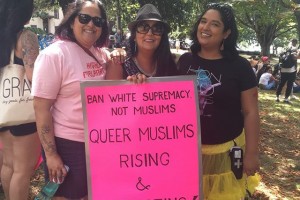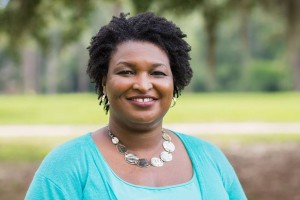Women have had enough. "Nosotras paramos! Ni una menos!" ("We strike! Not one woman less!") became the rallying chants across Argentina in October 2016, when women across unions, social movements and individually participated in a women's strike. The women's movement had been growing over the last decade, but no one imagined that a national women's strike was possible. A work stoppage, a walkout, a strike in domestic work; all these proved to be effective tools for challenging patriarchy and economic inequality in Argentina.
On March 8, 2018, 400,000 women, transgender activists, gender non-conforming people (and some men) marched from the government house in Argentina (known as the "Pink House") to the national parliament. The march was preceded that day by the third women's strike in recent Argentine history. (The first took place in October 2016, the second, in March 2017).
This year's strike and march were among the most widely debated in recent years. Among other issues, participants took up the growing calls for the legalization of abortion, which remains a criminal offence, owing to pressure from the Roman Catholic Church, unless the health or life of the mother is in danger. The debates around changing abortion legislation, scheduled for 2018 in Argentina's Congress, are further signs of changing times.
Popular assemblies took place throughout the country, breaking class barriers by organizing debates in poorer areas of the cities and reaching new members of the public. The subject of a women's strike was also for the first time a central debate on national television. In fact, during the summer months of January and February, a popular entertainment talk-show called Intrusos (Intruders) that runs every day at 2 p.m. across the country and is aimed at women who work at home (usually doing unpaid care and domestic work), decided to take up the issue of women's rights.
For months the show left aside the usual celebrity gossip and invited feminists to debate the upcoming strike, discuss the legalization of abortion and talk about the role of feminism in a changing Argentine society.
HOW DID IT ALL BEGIN?
Before 2015, International Women's Day in Argentina was marketed almost as if it were a second Valentine's Day. Common advertisements on Argentine television involved deals on flowers, chocolates or shoes. But in June of that year, the country was shocked by yet another femicide. A young teenage girl, Daiana Garcia, was found dead in a garbage dumpster on the outskirts of Buenos Aires. A twitter campaign called #NiUnaMenos (Not one woman less), initiated by journalist Marcela Ojeda, swept across social media in the country. Soon the hashtag was trending on Twitter across Latin America, very much like the #MeToo movement that took over North America two years later.
On June 3, 2015, hundreds of thousands of people mobilized around the country demanding an end to femicides and machista violence, and calling on every level of government to step up their commitments to ending all forms of violence against women.
The Ni Una Menos march became a rallying cry for women around the country and around Latin America. The reason behind it was clear: too many women and girls were suffering from gender-based violence and too many were losing their lives because of it.
Argentina has a high number of femicides: a woman is killed every 30 hours. Of reported killings, 35 per cent were at the hands of the woman's partner, while 33 per cent took place within the woman's household. These used to be publicly deemed "love crimes" or "crimes of passion," when in reality they are femicides executed against women who express disagreement or discomfort in a particular situation, usually within their own household.
WHY THE STRIKE?
"Si nuestro trabajo no importa, entonces produzcan sin nosotras." ("If our work does not count, then try producing without us.") That was the slogan of the strike. The need to connect violence against women with economic inequality, unpaid labour, and the campaign to legalize abortion led to the strike being used as a unifying cause. In Argentina, strikes are allowed outside of the collective-bargaining process. Political strikes are commonplace in the country, and it is not uncommon for unions to call for general strikes.

“My mom taught me how to fight!” (“Mi mama me enseño a luchar!”) At the first Ni Una Menos march, June 2016. PHOTOGRAPH: WALTER PIEDRAS
The strike took different forms for different women, according to what was possible for each woman in her individual workplace. As Alejandra Angriman, secretary of gender for the Argentine Workers' Confederation (CTA), one of Argentina's national confederations, says, "Total strike is difficult to establish in the sectors where unions are weaker or non-existent, as well as in the informal economy." She explains that for that reason "Our call was to strike according to your capacity. Unions in the public sector have a wide presence and their members are predominantly female. They managed to call for a full-day strike." But, Angriman continues, "I work in the private pharmaceutical sector, a very anti-union environment, and we managed to pull a five-hour strike in the afternoon, walking out on the job after midday and joining the march at 5 p.m. Other women work in precarious conditions and cannot confront their bosses without losing their job. In those cases we tried to guarantee that there was a moment in the day when women could meet and organize a discussion, or that they could leave earlier to join the march in the late afternoon."
A women's strike was more than justified on both economic and social fronts. According to data released for the day of the strike by the National Statistics Institute (INDEC), women in Argentina earn 27 per cent less than men do for the same jobs in the formal sector, and 35 per cent less in the informal sector. Women suffer precarity and under-employment to a greater extent than do men.
Unemployment among women stands at 9.5 per cent while the same situation affects 7.3 per cent of men.
Vanina Escales works at the Center for Legal and Social Studies (CELS), a human rights organization in Buenos Aires, and is a founding member of the collective Ni Una Menos. For her, this year's march was especially exciting, having doubled in size since the first strike: "Who are these people? The masses overflowing the streets showed that feminism continues to engage women with and without previous experience in activism, that its idea of justice represents the vast majority," she says. Escales points out that "This year there were as many self-organized groups as groups related to unions, social movements or political parties."
Perhaps the largest economic justification for the strike comes not from statistics to do with formal employment but from those related to unpaid domestic and care work. Latin America has an entrenched problem with unpaid domestic work. According to the Economic Commission for Latin America (ECLAC), the working week for women in all of Latin America averages 72 hours, for men, 61 hours. Of that total, women on average work 33 unpaid hours per week, men only 12. In Argentina itself, women also work an average of 33 unpaid hours a week, but within a 70-hour work week.
Unpaid work, poor child-care provisions, and short maternity and paternity leave (only three days for men at the time of writing) are structural problems for women and for society as a whole. A mural campaign in Buenos Aires, started by artist Ailen Possamay, called "Eso que llaman amor es trabajo no pago" ("That which you call love is actually unpaid work"), strikingly illustrates the issue: it comprises a series of images of women doing traditional housekeeping work in their household, with each image accompanied by those words.
For many, the strike really did take place in the household. As Sara Cufre, a member of the public-sector union representing workers at the country's Ministry of Science, Technology and Productive Innovation, puts it: "The strike was not massive in our workplace. People went to work, but women participated in different activities. We distributed leaflets to cars outside our office, and many later joined the big march. Colleagues that normally do not participate in any of the union activities came to the march this time. That day I did not go to work, but I went to my workplace, to participate in the workplace assemblies and later to organize for the march. My strike was stronger in my household. I did not do any of the tasks I normally do, and I left them entirely to my partner."
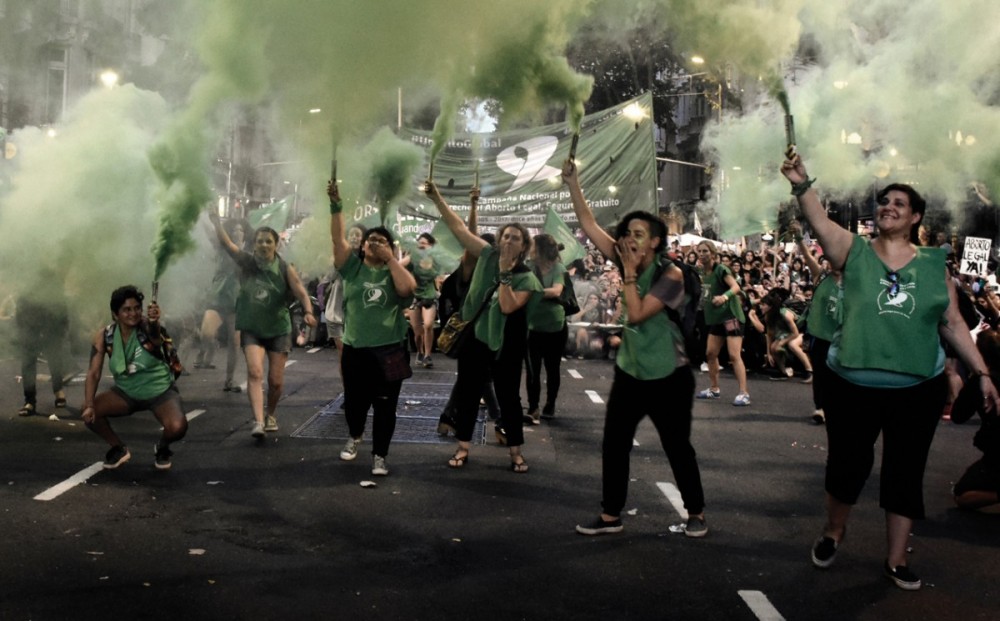
PHOTOGRAPH: WALTER PIEDRAS
Laura Zaldua, a psychologist at one of Buenos Aires's largest public clinics, was pumped up that day. For the first time since she began working there, her entire ward went on strike. "We had never gone on strike before," she explains. "Many of us are not unionized, but this year women got together and stopped working at 10 a.m. on the 8th."
Zaldua was surprised by the diversity of women participating at the march. "There were many new organizations that I did not know before, or that were recently created," she says, "as a product of the massive mobilization of the women's movement in the last few years."
The union movement was initially hesitant to join the strike, but then the pressure of their own members pushed the predominantly male leaderships to change positions. According to data from the Argentine Statistical Institute, less than 20 per cent of trade-union leaders are women. The largest national confederation, the General Confederation of Labor (CGT), has a national executive council made up of less than three per cent women. If it makes unions feel any better, the Industrial Employers' Organization has zero women in leadership positions. The problem of representation is entrenched even in public-sector and teachers' unions as well as others where, like these, women compose the vast majority of the membership while men hold the leadership roles.
Though the strike did not originate with the unions, it quickly grew among union members. Today, most unions participate in the march and the strike. According to Alejandra Angriman, "for the first time in years we are seriously discussing parity within the union's leadership. In our recent congress we got a majority vote to reach gender parity in the upcoming union elections. That is a huge victory."
THE STRIKE GOES INTERNATIONAL
Since the beginning of Ni Una Menos, and from the first strike, it was clear that the movement needed to connect and expand internationally. Different movements around the world were already discussing the need for a strike, but the early example in 2016 in Argentina showed a way forward. Migrant women actively participated in and organized the 2016 strike, ensuring that it was internationalist from the outset. They also became a nexus of the women's movement throughout Latin America and later the rest of the world. Ni Una Menos profoundly affected the region, since violence against women is such an ingrained problem.
Sixty different countries were connected by the organizing of this year's strike. In Spain, to give just one example, hundreds of thousands of women went on strike for the first time, their demands similar to those of the Argentine women's movement.
The main document of the strike reads "we strike because we are part of a collective and international struggle. [...] In each of our marches, we bring together the struggle of those 15,000 women, mostly migrant, who marched in New York demanding the eight-hour working day in the early 20th century. . . ." The document closes with these words: "The feminist movement is the product of anti-patriarchal and anti-capitalist struggles around the world, and emerges as a counter-power against the advances of repression, racism and conservatism."
In Canada, a woman is killed every 48 hours; there are well over 1,200 missing and murdered Indigenous women and girls; the gender pay gap is at 30 per cent and even greater for Indigenous, racialized, Trans and differently abled women; and we're still waiting for universal child care. Thanks to the tireless efforts of diverse women, the women's movement in Canada is becoming more and more intersectional, recognizing that ending violence and discrimination against women requires an end to racism, colonialism and all forms of oppression, too.
As a movement, what can we learn from women's movements around the world, and actions like the women's strike in Argentina? What could a national women's strike in Canada look like?
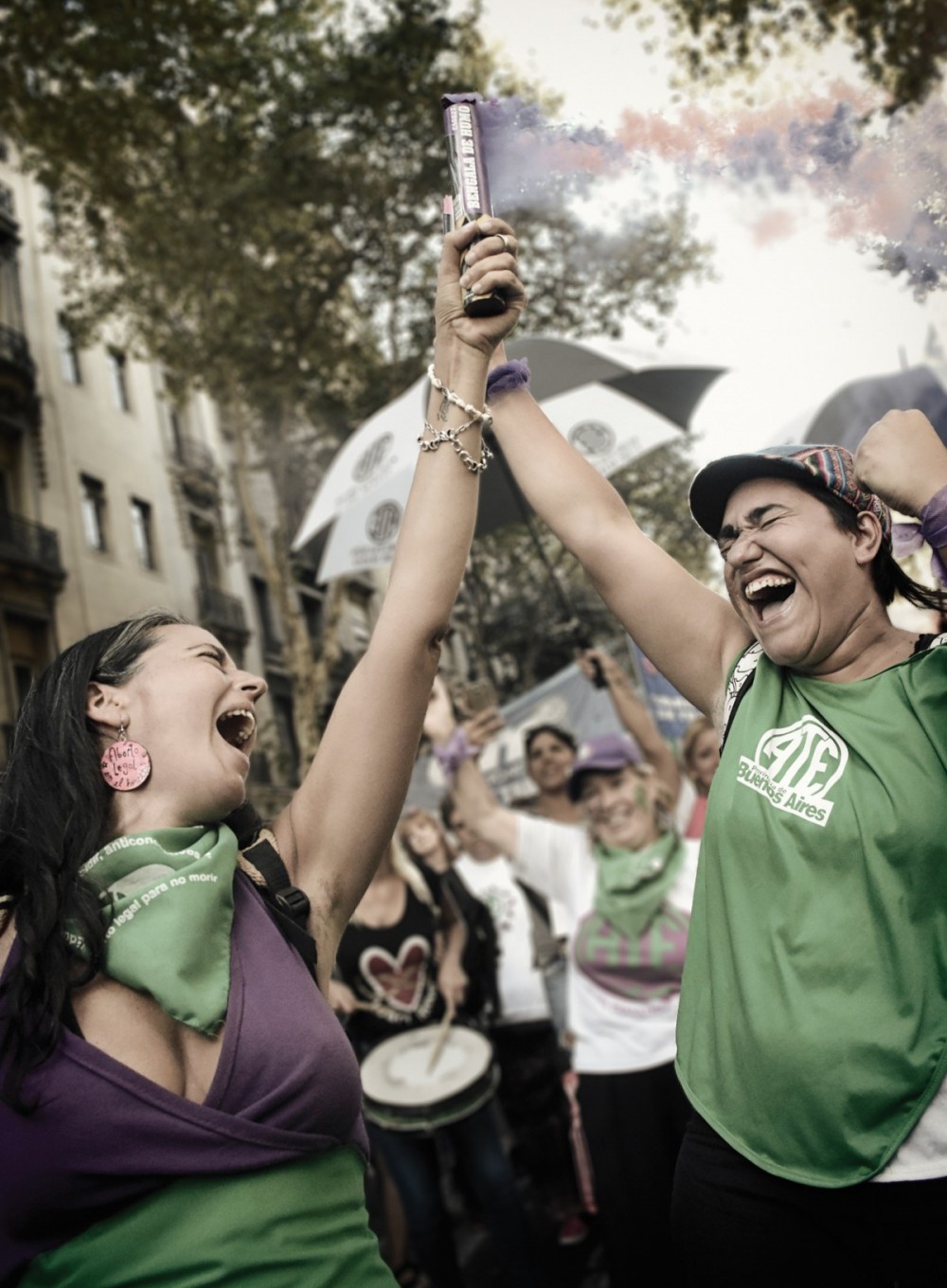
PHOTOGRAPH: WALTER PIEDRAS
Chiara Padovani is a feminist social worker and human rights advocate. She has worked with women's and human rights organizations throughout Latin America for over six years. She currently resides in Toronto.
Bruno Dobrusin is a labour activist from Argentina, currently living in Toronto. He worked for seven years with the Argentine Workers' Confederation (CTA) and was a member of the Public Employees Union.


